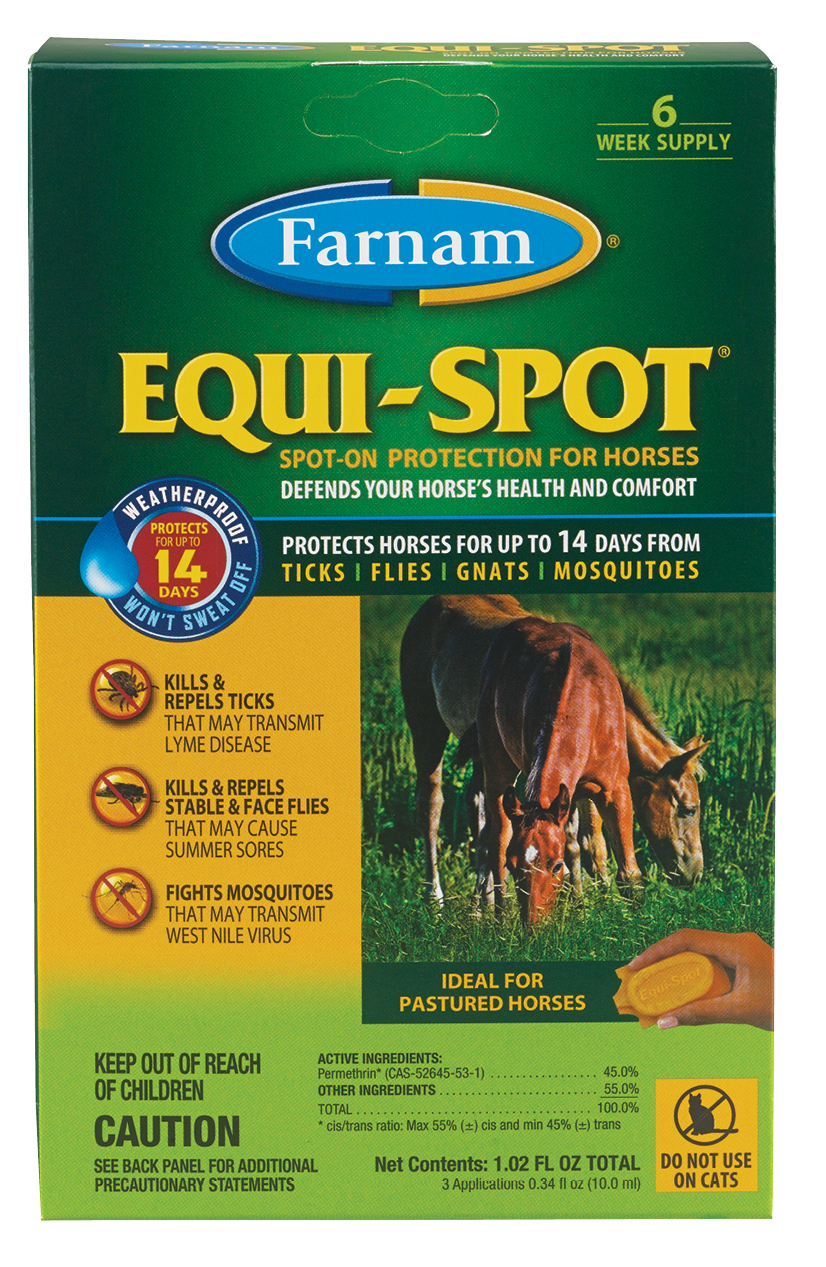Lyme Disease
This bacterial infection is the most prevalent vector-borne disease in North America. Caused by the bite of an infected blacklegged (deer) tick, Lyme disease also affects humans and other mammals. Lyme disease in horses is difficult to diagnose, as the disease can mimic many other conditions. Symptoms usually develop several months after infection, during the disease’s chronic phase. Tissues affected include those of the nervous system, eye, and skin. Treatment often includes tetracyclines and other beta-lactam antibiotics. Though there’s currently no equine vaccine available, a canine vaccine may provide some protection—ask your veterinarian if you’re in a high-risk area (see box).
[READ: Protect your horse from other types of infection.]


Ticks Be Gone!
Your best strategy overall? Keep ticks off your horse. Use repellent products labeled specifically for ticks, applying especially around the ears, under the jaw, at the root of the mane, on the tail head, and on the chest and underbelly. Groom daily to find and remove any ticks, feeling with your hands for tiny lumps.
Key Cautions
Vague Symptoms
Clinical signs of Lyme disease can include chronic weight loss, sporadic lameness, low-grade fever, muscle tenderness, swollen joints, stiffness, and uveitis—all of which can be caused by other diseases as well.
Blood-Test Issues
Early diagnosis can help prevent the most serious effects of Lyme disease in horses, but diagnosis is problematic. Blood tests can tell whether a horse has been exposed to the Lyme-causing bacterium, but a positive result doesn’t mean infection, just exposure. Your veterinarian should therefore also try to rule out other diseases that can cause similar symptoms.
Range Increasing
Although Lyme disease is most prevalent in the Northeast and Upper Midwest, it also occurs in other locales, including on the West Coast, and its incidence appears to be on the rise. The range of the tick responsible for infection is also expanding.






